Planning Your Safari: The Best Time to Visit the Serengeti
Welcome to the heart of Africa, where the vast plains of the Serengeti beckon with their untamed beauty and diverse wildlife. This post will delve into the best time to visit the Serengeti and provide lots of useful information to plan your safari.
If you’ve ever dreamed of experiencing the raw majesty of the African savannah, the Serengeti National Park is an amazing place to do so. I spent three amazing days exploring the Serengeti as part of my safari in northern Tanzania, and now I want to share my experience and knowledge with you!
Some people visit Tanzania to summit Mount Kilimanjaro, which is an amazing challenge! Adding on a safari in the Serengeti just makes sense – especially if you have come all this way.
Disclaimer: This post may include affiliate links. If you click one of them, I may receive a small commission at no extra cost to you.
Ready To Book Your Safari?
I am partnered with CloudSafaris and you can get a discount with your booking. Visit Cloud Safari Trips page.
Enter the referral code: THEWORLDTRAVELGIRL to receive $100 off your booking
NOTE: You will not be charged right away when booking a safari online. They will be in touch to review details and plans before anything gets confirmed.
If you want me to help you decide what to do and plan your trip, then feel free to reach out to me to help you put together an amazing itinerary for your safari!
The Serengeti, located in northern Tanzania, extends into southwestern Kenya, known as the Maasai Mara, is perhaps one of the most iconic wildlife reserves in the world. Its name is derived from the Maasai language, which means “endless plains,” a fitting description for the sprawling landscape that stretches as far as the eye can see.
Established in 1951, the Serengeti National Park covers an area of approximately 5,700 square miles, making it one of the largest and oldest parks in Africa. Recognized as a UNESCO World Heritage Site, the Serengeti is renowned for its annual wildebeest migration, where millions of these ungulates traverse the plains in search of fresh grazing grounds, accompanied by zebras, gazelles, and predators such as lions and cheetahs.
The Great Migration
The biggest draw for many people to visit the Serengeti is to see the Great Migration, involving roughly two million wildebeest. It begins in the south of the Serengeti, with half a million calves born between January and March.
This 800-kilometer journey is the largest mammal migration on Earth, timed with the greening of grasses during the wet season for safety and calving. As the plains dry, the herd moves westward in search of greener pastures. The clockwise movement from south to west to north and back is a remarkable circle of life.
Predators like lions and hyenas target the newborn calves, while the migration northward towards the Maasai Mara in Kenya involves crossing perilous rivers teeming with crocodiles. Despite the challenges, witnessing the collaborative hunting efforts of lions is an unforgettable experience in this unforgiving landscape.
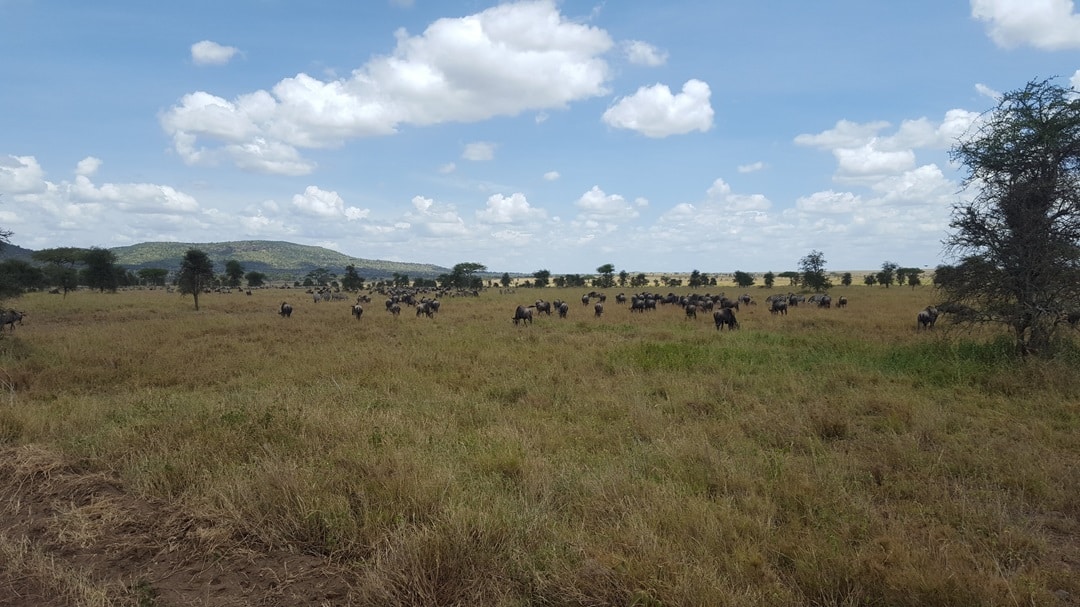
Best Time to Visit the Serengeti
While the Great Migration is a significant draw, the Serengeti offers a wealth of experiences throughout the year, making any visit a memorable journey. Here’s a breakdown of the best times to go to the Serengeti and explore this majestic landscape.
Dry Season (June to October):
The dry season offers some of the best wildlife viewing opportunities in the Serengeti. With the vegetation less dense and animals congregating around water holes, sightings of predators and prey become more frequent and visible. This period is also excellent for seeing large herds of elephants, giraffes, and the big cats in action.
Expect to enjoy bright days filled with lots of sunshine, where afternoon temperatures hover around a comfortable 25°C (77°F) and fewer mosquitoes! The Serengeti can become quite crowded as many visitors aim to take advantage of the favorable conditions. Nights and early mornings can get relatively cold, with temperatures sometimes dropping to around 14°C (57°F) and sometimes colder.
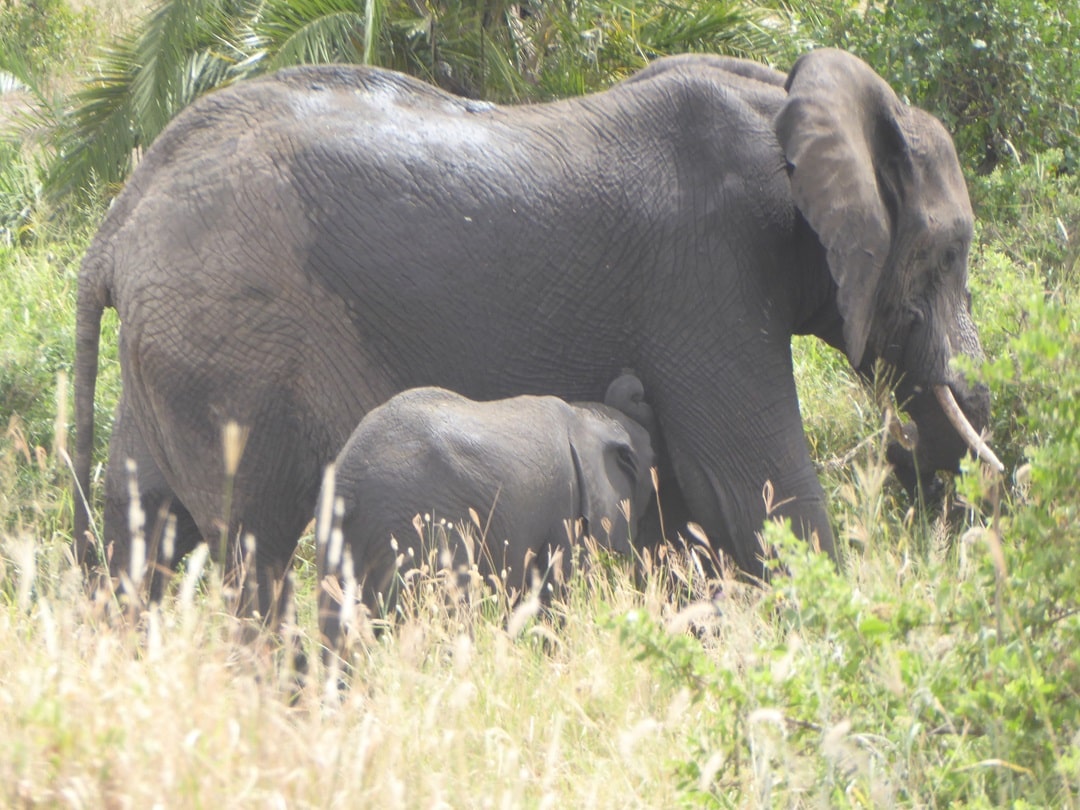
Wet Season (November to May):
As the savannah starts to transform into a lush and green background, visiting during this time can provide for some amazing opportunities as well. Birdwatching is particularly rewarding during this time, with over 500 species present, including migratory birds that add to the park’s diversity. The wet season also sees fewer tourists, offering a more secluded and intimate experience of the wilderness.
November to February are sometimes marked with short afternoon storms that rarely disrupt activities, allowing for enjoyable safari experiences. A highlight of the wet season is the calving season, particularly in the southern plains. While this coincides with part of the Great Migration, the focus here is on the remarkable event of thousands of wildebeest and zebra births.
I visited the Serengeti in mid-February and though I didn’t experience the full on migration, I did see lots of wildebeests and zebras, birdwatching was great and I had fantastic, hot weather with no rain. This was the best time to visit the Serengeti to reap the benefits of amazing sightings of wildlife and birds.
March to May represents the peak of the wet season, with more frequent rainfall that, despite rarely lasting all day, can bring extended cloudiness. This period is quieter in terms of tourist numbers, which may provide a certain type of solitude and connection to nature, if you can handle the rain.
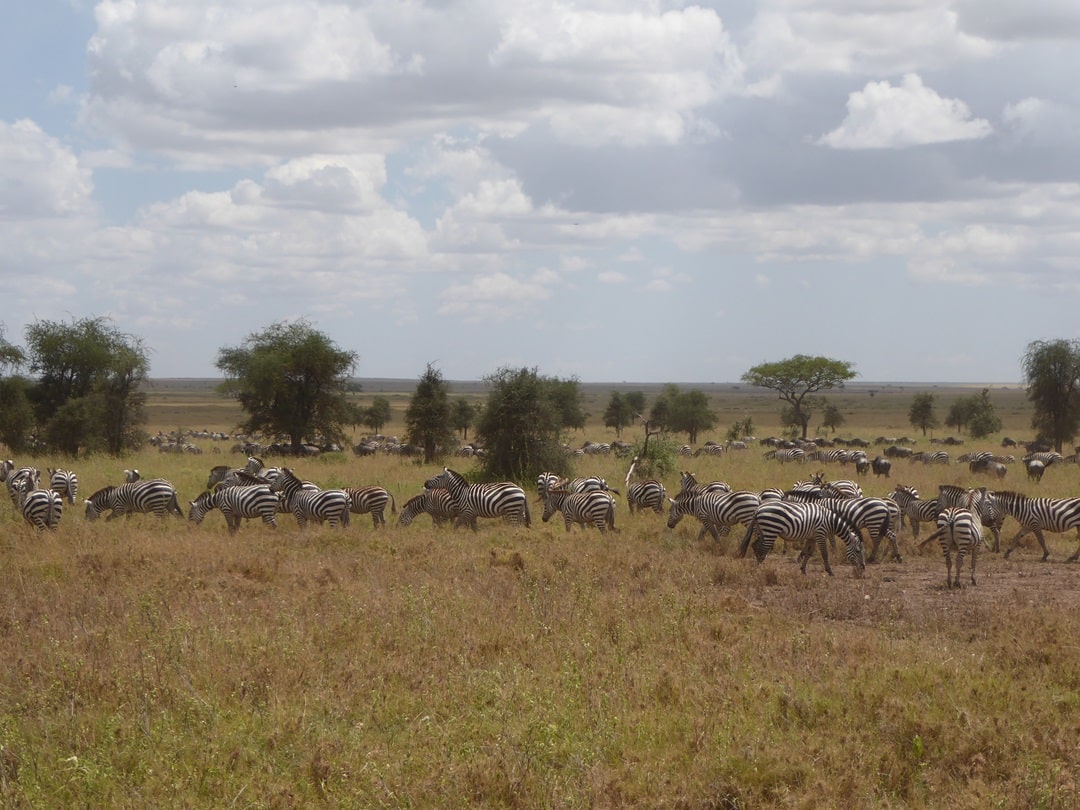
What to Expect on Safari
Visiting the Serengeti National Park promises a once-in-a-lifetime experience filled with unforgettable moments. A day on a safari is often a full day of exploring the plains.
The Serengeti is home to an astonishing array of wildlife, offering visitors the chance to encounter the Big Five (lion, elephant, buffalo, leopard, and rhinoceros) along with countless other species.
In addition to the iconic mammals, bird enthusiasts will delight in spotting a variety of species, including ostriches, secretary birds, vultures, and colorful bee-eaters.
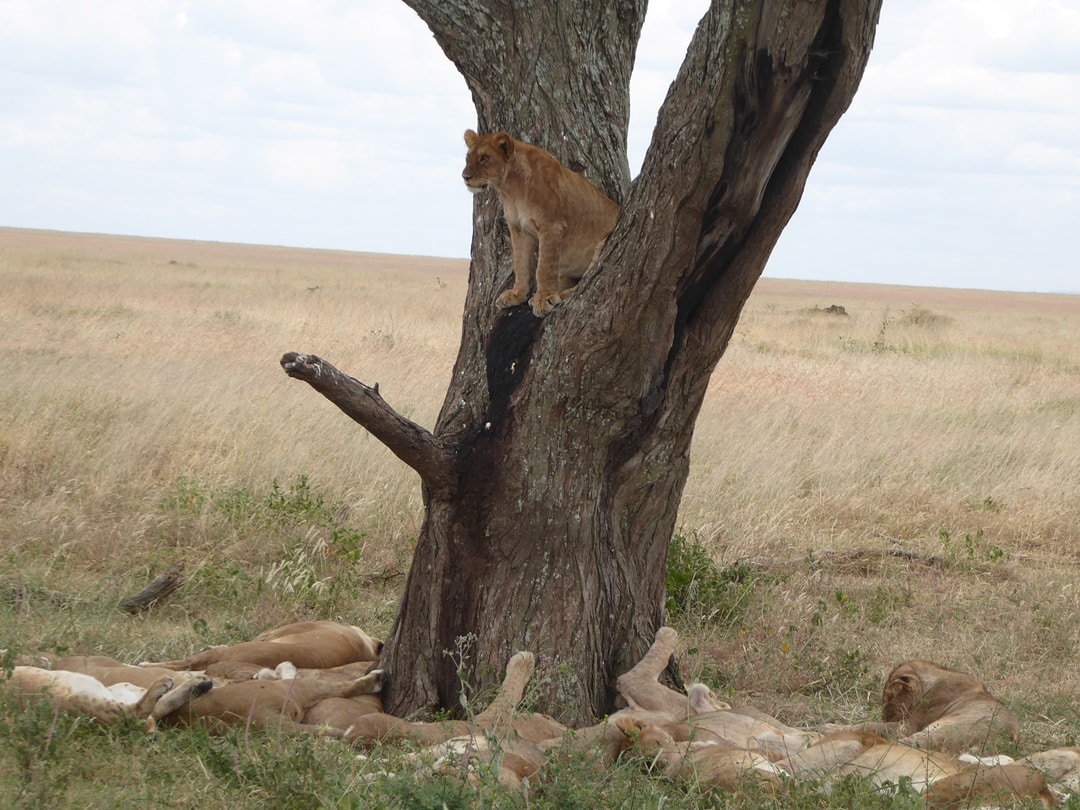
Planning Your Visit to the Serengeti
There are many components to planning your safari in the Serengeti. Aside from figuring out the best time to visit the Serengeti, you have to consider where you want to stay, how to get there, what to pack and what you want to do. Don’t forget that a stop at Ngorongoro Crater is a must, as it is very close to the park.
If you are very busy, planning a trip can be time consuming and overwhelming.
That is where I can help! I have experience from visiting Tanzania and I can help you make those decisions. I work with a local safari tour company that is on the ground, and I would love to help with planning your dream trip.
IF YOU ARE LOOKING TO BOOK A SAFARI, THEN I HAVE A GREAT DEAL FOR YOU!
Visit: https://cloudsafaris.com/trips and enter the referral code: THEWORLDTRAVELGIRL to receive a $100 discount on your booking.
Booking a safari online will not charge you right away, as they will be in touch to review details and plans before anything gets confirmed.
Where to Stay in the Serengeti
When visiting the Serengeti National Park, you’ll find a range of accommodation options to suit every preference and budget. From luxury lodges and tented camps offering unparalleled comfort and service, to more rustic camping experiences for the adventurous at heart. There is something for everyone. Two of the best lodges in Tanzania that I stayed at were Seronera Wildlife Lodge and Kati Kati Tented Camp.
It is always best to consider what amenities the lodge has to offer and understand what a typical day on a safari looks like, and that will help you to make a decision on where you would like to stay. If you compared a Tanzania vs South Africa safari, you will see that it is quite different in my experience, but will still yield the same amazing sightings of wildlife.
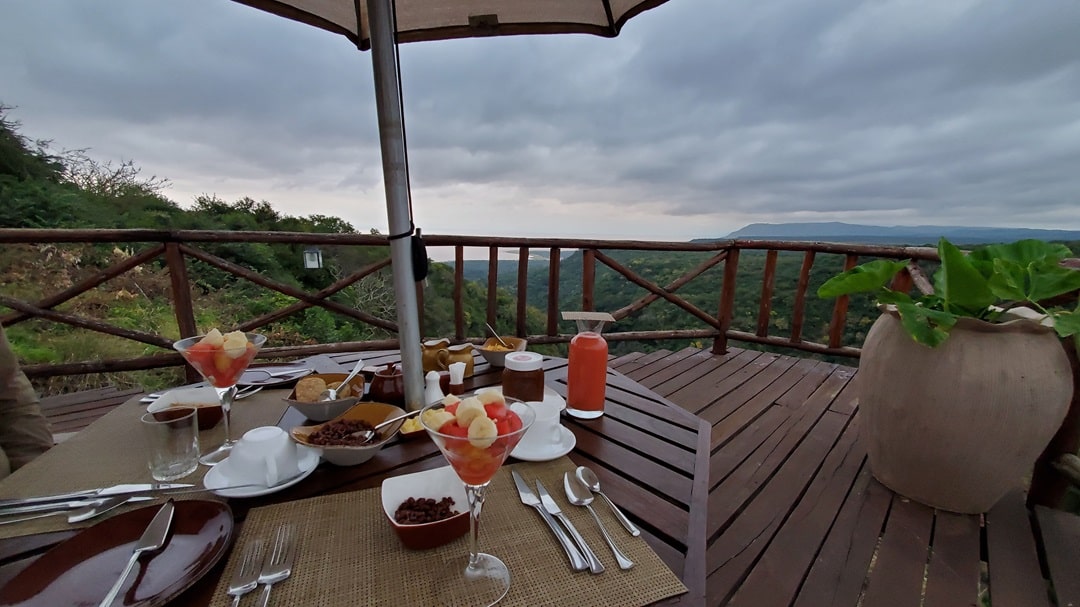
How to Get to Serengeti National Park
Reaching the Serengeti National Park is relatively straightforward but will depend on what your safari tour includes and where it starts from.
If you are visiting other safari parks in Tanzania, like Lake Manyara National Park, then you will most likely be picked up in Arusha. Therefore you fly into the Kilimanjaro International Airport. From there you would head out on a scenic road trip with stops along the way. I highly recommend you do a safari tour like this.
If you want to go directly to the Serengeti, then you can take a domestic flight to Seronera Airstrip or one of the other airstrips within the park, followed by a short drive to your chosen accommodations.
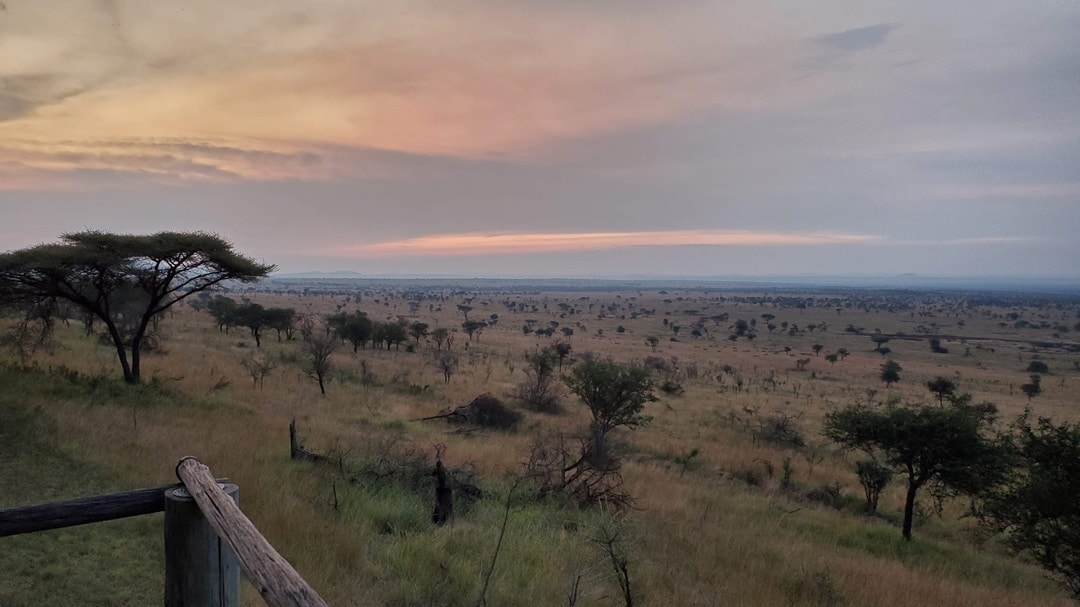
What To Pack For Your Safari
As you prepare for your Serengeti National Park safari, it is essential to pack wisely to ensure a comfortable and enjoyable experience. Your safari packing list should at minimum, include:
- Lightweight, neutral-colored clothing for hot days and cooler evenings
- Sturdy walking shoes for game drives and nature walks
- Sunscreen, sunglasses, and a wide-brimmed hat to protect against the sun
- Binoculars and a camera with extra batteries to capture the incredible wildlife sightings
- Insect repellent and to guard against mosquitoes and other insects
- A reusable water bottle to stay hydrated during your excursions
- Personal medications and a basic first-aid kit
- A daypack for carrying essentials during outings
You can download your free complete safari packing list here:
Safety Tips
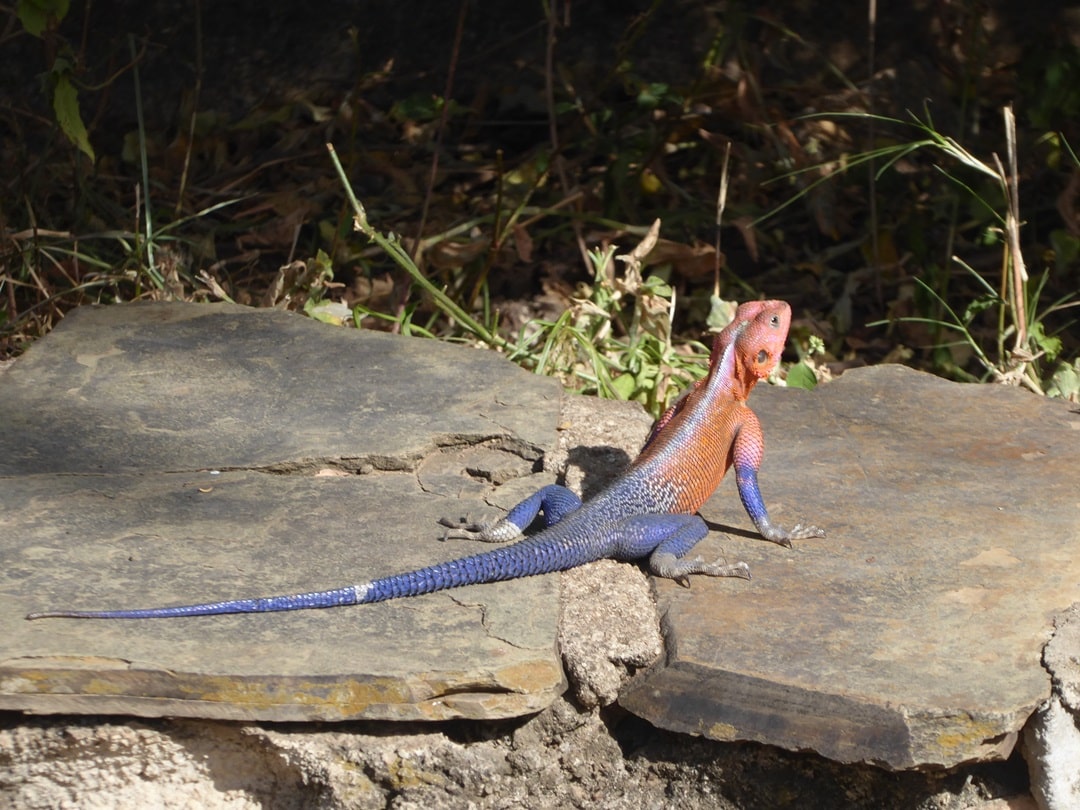
The best time to visit the Serengeti is whenever your heart desires an adventure like no other. Whether you’re drawn to the thrill of witnessing the Great Migration or simply want to connect with nature in the sights and sounds of the African wilderness, a journey to the Serengeti National Park promises memories that will last a lifetime!
If you enjoyed my post, follow me on social media or subscribe to my newsletter below, so you can stay connected on future posts, trips, tips and more.



Love this! I’m planning to visit the Serengeti next year (hopefully) so this is great. I’d love to see the Great Migration … but by the sounds of it I should visit during the dry season to avoid the mozzies as much as possible!
Any time to visit is definitely worth it!
Useful list of things! Thank you!